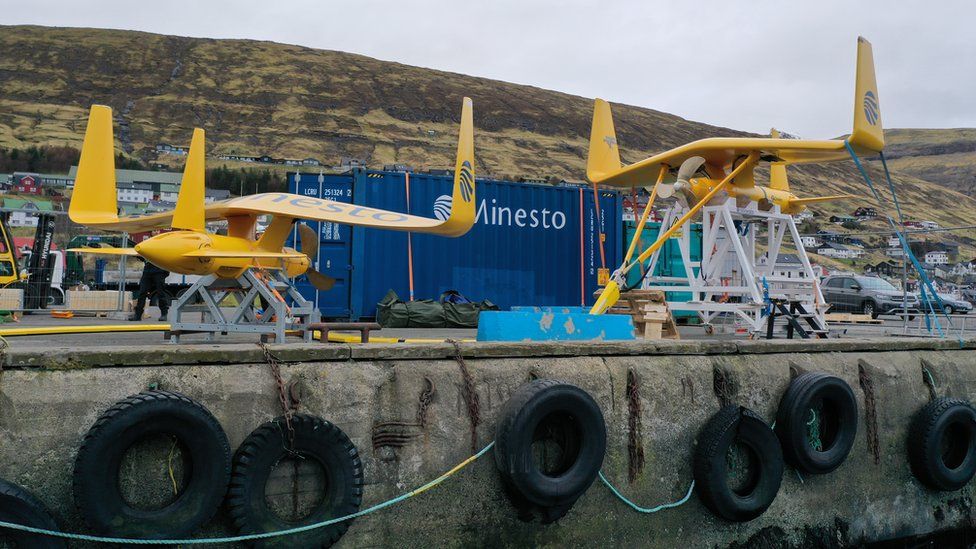Showing posts with label North Atlantic. Show all posts
Showing posts with label North Atlantic. Show all posts
Friday, July 1
Hurricanes and Typhoons
(CNN)—Before the era of satellites, it was next to impossible to know whether a hurricane occurred out in the open ocean unless a ship was unlucky enough to run into it. And scientists for decades have been trying to piece together a historical record to better understand how the climate crisis is changing these storms.
But researchers said Monday they have constructed a clearer picture than ever, and found that the frequency of the planet’s most devastating storms has decreased over the past century.
The study, published in the journal Nature Climate Change, found that the annual number of global hurricanes, typhoons and tropical storms — or tropical cyclones, more generally — declined by roughly 13% as the planet warmed during the 20th century.
Scientists found that trend in most of the world’s oceans — except for the North Atlantic, where the number of storms increased.
The lead researcher on the study told CNN that while his team found a drop in frequency, that doesn’t mean storms are becoming less of a threat. In fact, said Savin Chand, a senior lecturer at the Federation University in Australia, while there may be fewer tropical cyclones in the future, it is likely they will be more intense.
“Cyclones are no doubt one of the costliest natural disasters everywhere,” Chand told CNN. “What’s happening with global warming is that these underlying conditions are getting more unfavorable for cyclones to form in the first place. But even though cyclones are getting fewer, those that do form are now feeding more energy from the warming atmosphere, so that’s why they’re getting more intense.” READ MORE...
Saturday, March 26
Vikings Left Greenland in the 15th Century
One of the great mysteries of late medieval history is why did the Norse, who had established successful settlements in southern Greenland in 985, abandon them in the early 15th century? The consensus view has long been that colder temperatures, associated with the Little Ice Age, helped make the colonies unsustainable.
However, new research, led by the University of Massachusetts Amherst and published recently in Science Advances, upends that old theory. It wasn't dropping temperatures that helped drive the Norse from Greenland, but drought.
When the Norse settled in Greenland on what they called the Eastern Settlement in 985, they thrived by clearing the land of shrubs and planting grass as pasture for their livestock. The population of the Eastern Settlement peaked at around 2,000 inhabitants, but collapsed fairly quickly about 400 years later.
When the Norse settled in Greenland on what they called the Eastern Settlement in 985, they thrived by clearing the land of shrubs and planting grass as pasture for their livestock. The population of the Eastern Settlement peaked at around 2,000 inhabitants, but collapsed fairly quickly about 400 years later.
For decades, anthropologists, historians and scientists have thought the Eastern Settlement's demise was due to the onset of the Little Ice Age, a period of exceptionally cold weather, particularly in the North Atlantic, that made agricultural life in Greenland untenable.
However, as Raymond Bradley, University Distinguished Professor of geosciences at UMass Amherst and one of the paper's co- author, points out, "before this study, there was no data from the actual site of the Viking settlements. And that's a problem."
However, as Raymond Bradley, University Distinguished Professor of geosciences at UMass Amherst and one of the paper's co- author, points out, "before this study, there was no data from the actual site of the Viking settlements. And that's a problem."
Instead, the ice core data that previous studies had used to reconstruct historical temperatures in Greenland was taken from a location that was over 1,000 kilometers to the north and over 2,000 meters higher in elevation. "We wanted to study how climate had varied close to the Norse farms themselves," says Bradley. And when they did, the results were surprising. READ MORE...
Wednesday, December 1
Underwater Kites
 SOURCE,MINESTO...The energy-generating kites "fly" under the water, tethered to the seabed
SOURCE,MINESTO...The energy-generating kites "fly" under the water, tethered to the seabedA pair of sleek, winged machines are "flying" - or at least swimming - beneath the dark waters of the Faroe Islands in the North Atlantic.
Known as "sea dragons" or "tidal kites", they look like aircraft, but these are in fact high-tech tidal turbines, generating electricity from the power of the ocean.
The two kites - with a five-metre (16ft) wingspan - move underwater in a figure-of-eight pattern, absorbing energy from the running tide. They are tethered to the fjord seabed by 40-metre metal cables.
Their movement is generated by the lift exerted by the water flow - just as a plane flies by the force of air flowing over its wings.
Other forms of tidal power use technology similar to terrestrial wind turbines but the kites are something different.
The moving "flight path" allows the kite to sweep a larger area at a speed several times greater than that of the underwater current. This, in turn, enables the machines to amplify the amount of energy generated by the water alone. READ MORE...
Subscribe to:
Comments (Atom)

